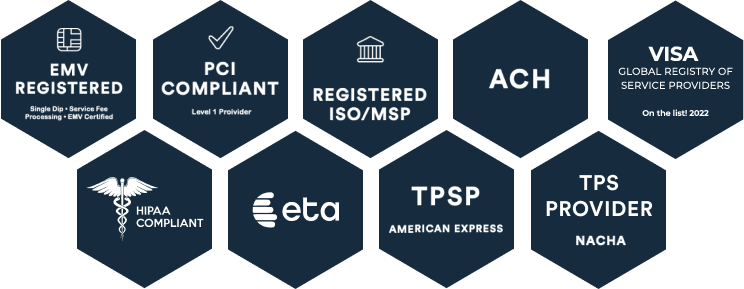We’ve modernized shopping with the click of a button and package delivery the next day. We’ve even modernized the art of ordering takeout. Another click of the button and a delivery right at our doorstep. We’ve managed to modernize nearly everything, from our taxes to drive-thru pharmacies to real-time doorbell monitoring cameras. And yet, many businesses struggle to modernize the payment experience.
Your current payment experience isn’t working for your customers or your staff. Here’s why:
Customers expect more options and convenience at checkout
On the frontend, customers expect more options at checkout. And they’ll choose the most convenient option available. The current process looks like some combination of the following for customers:
- Waiting in long lines at checkout
- Receiving printed invoices or bills in the mail
- Looking for lost invoices in a busy inbox
- Ignoring multiple phone calls asking for payment
- Giving credit card information over the phone
And each of these scenarios presents a few problems:
- Long checkout lines create increased frustration Nearly 50% of consumers say long hold times are a top frustration for phone calls—the same is true for waiting in line in person.
- Printed invoices get lost in the mail and delay payments Nearly 70% of consumers who make late payments say they would be more likely to make payments on time if they could pay via text.
- Emailed invoices get buried in busy inboxes Email open rates are consistently low at just 20% leaving most emails unopened, forgotten, and sent without ever initiating any action.
- Persistent phone calls are ignored Phone calls, on average, take 10x as long as a text conversation, often spurring consumers to ignore phone calls in favor of faster communication options.
- Payment information required over the phone makes customers nervous 69% of consumers report concerns about the security of the digital platforms they use to make payments—giving information over the phone to a live representative doesn’t ease any of the unease.
What do customers really want? The most modernized payment experience available. Customers want speed, safety, and more than ever before, a clean and touchless payment experience.
At least 80% of consumers say that speed and convenience are top priorities in a positive customer experience. And at checkout, 83% of consumers want to make payments digitally on their phones or another online platform. Tap-and-go and text-to-pay increase the speed of the payment experience and meet the demands of today’s consumers for all payment scenarios from monthly utility bills to Friday night takeout.
And with increased speed comes an increased desire for safety. Consumers are ready to trade in over-the-phone payments and third-party payment collection sites (each of which create more opportunities for security risks) for safe and secure payment experiences. Often, this means fewer steps and no need to repeat credit card information for repeat purchases or payments.
Consumer expectations for payment experiences during the pandemic are now the new normal. In fact, 74% of consumers report that they will continue to use contactless payment options even after the pandemic is officially over. This is especially important considering how many consumers are willing to move to competitors that offer a contactless payment option instead of staying with a current brand or business—more than 60%.
What do businesses want for customers? Businesses need to serve consumers at scale. This means reducing wait times for payments, sending payment requests in the channels customers prefer, and offering payment options that consumers want to use.
Employees need the right tools and technology to improve customer engagement and service
On the backend, employees need the right tools and technology to both engage and service customers better. Unfortunately, most teams often swim upstream to meet these goals with outdated platforms and processes that don’t hold up to today’s standards of efficiency.
The current process looks like some combination of the following for employees and staff members:
- Wasting time on manual reconciliation
- Creating too many opportunities for human error
- Spending too much time following up on customer payments
And each of these scenarios presents a few problems:
- Manual reconciliation takes too much time At least 30%—12 hours per team member—of a finance team’s time is wasted in the depths of manual reconciliation instead of applied to more strategic work for the business.
- Human error is all too common For every 5 entries, at least 2 entries create an error—creating even more frustration for internal teams that must go back and check all manual entries and then fix each error.
- Customers take too long to make payments requiring too many follow ups and reminders More than 50% of businesses report that it takes too long to receive customer payments and 45% of customers don’t pay their bills on time.
What do employees really want? An easier way to engage with customers, automate reconciliation, reduce opportunities for manual error, and increase overall productivity.
Employees and staff members are interested in an easier way to communicate and collect payments from customers. With the rise of popularity in texting, digital communication via text is often the channel businesses turn to for increased customer engagement (and faster customer action—45% of consumers will complete the action requested in a text they receive).
To reduce time wasted on double entry and other manual reconciliation time sucks, automated reconciliation offers a big opportunity for employees to save time and reduce opportunities for manual error. Nearly 60% of financial department resources can be saved just by adding automatic reconciliation. And while every five manual data entries creates at least two errors, automatic reconciliation can split errors in half, down to at least one error saved per five entries. The reality for employees is simple—they want to be productive. They want the opportunity to use tools and technology to service and interact with customers and internal peers in the best way possible to drive results faster and provide a better customer experience.
What do businesses want for employees? Businesses need employees that can anticipate customer and business needs faster and more strategically than their competition. Businesses want the same things employees want—no wasted time on extra work or work that could be automated. Instead, allocate employee time to better use on more strategic work that drives the business forward.
Worried your team is wasting time with your current billing and payment process? Take the self assessment >
Find out how inefficiency in your payment experience impacts more than just wasted hours, it impacts every area of your business (and your customer experience). Watch the 60-video here >
Ready to transform your payment experience with a trust industry partner? Let’s chat >






